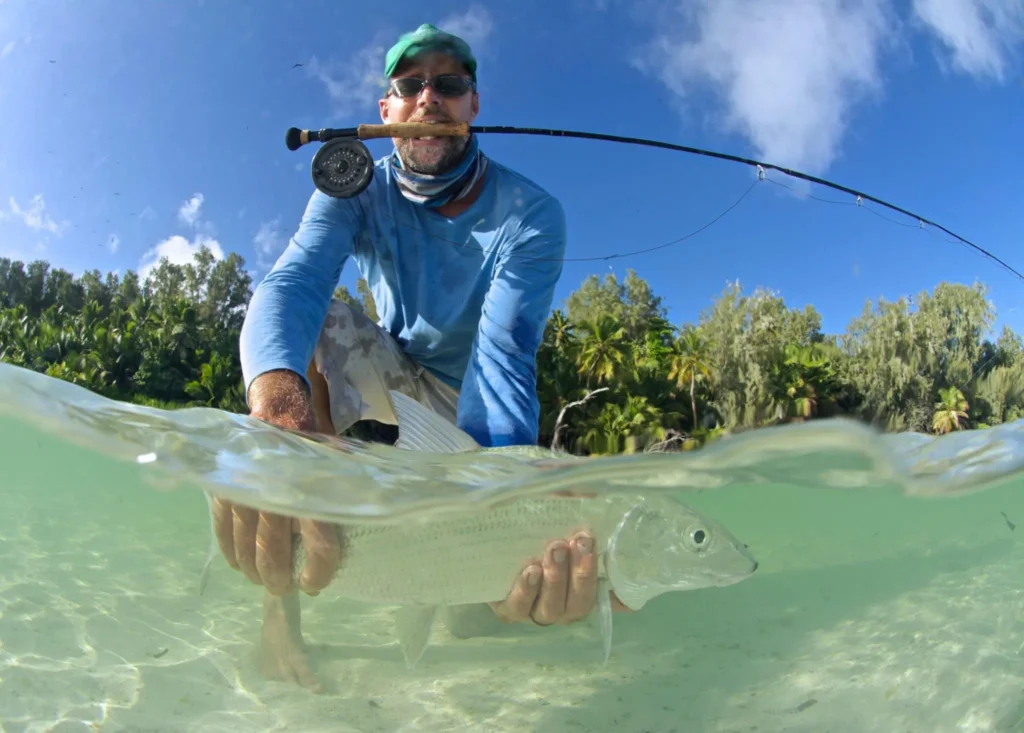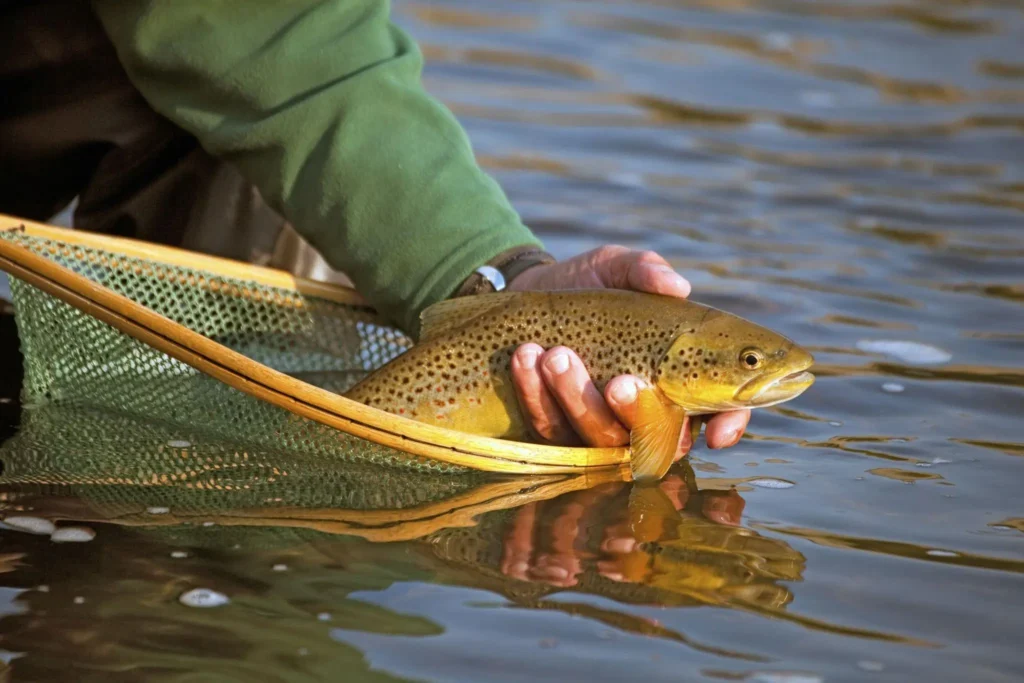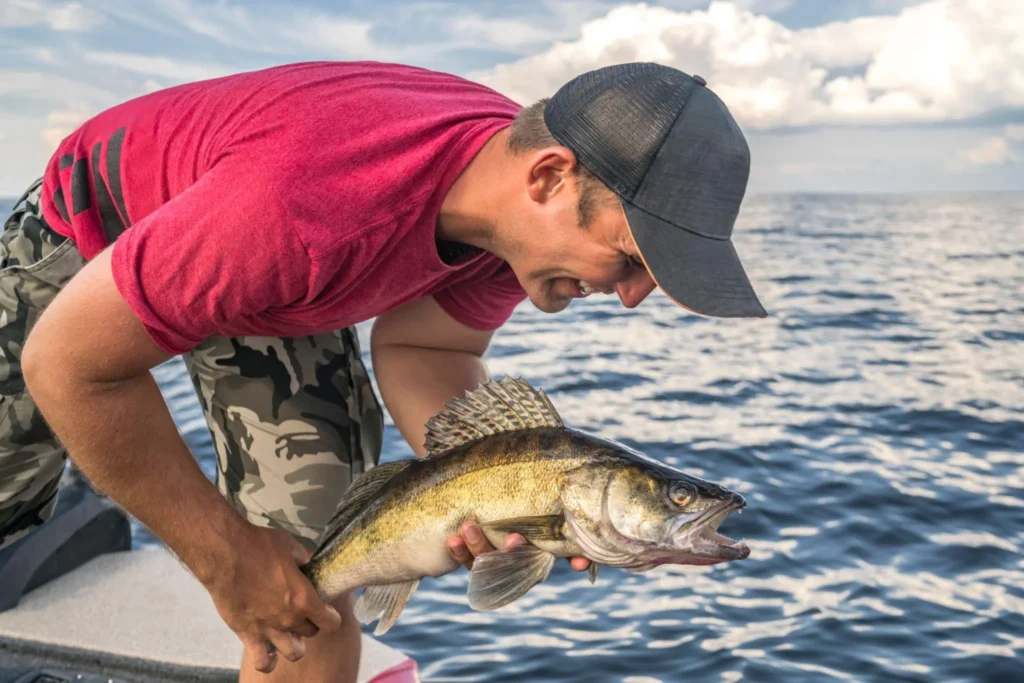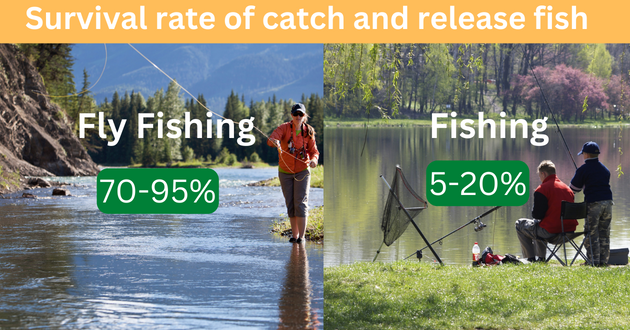
Yes, in most cases, catch and release does hurt fish. However, the extent of the harm significantly depends on the angler.
This might not be the response you anticipated, but the question, “Does catch and release hurt fish?” has complex facets. The situation isn’t black or white due to the numerous opinions and research studies available.
Impacts of catch and release on fish can vary based on the fish species, the angling methods, and most crucially, how the angler handles the fish.
In this guide, I will delve deeper into this matter and provide you with guidelines to lessen harm to fish during catch and release practices.
You should also read: Do fish feel pain when they get hooked? Like humans do?
Table of Contents
- Harmful Factors in Catch and Release Fishing
- Strategies to Minimize Harm to Fish
- Best Practices for Catch and Release Fishing
- Proper Approach for Deep Sea Catch and Release
- Is it ethical to catch-and-release fish?
- What percentage of fish survive catch-and-release?
- How do you catch-and-release fish without killing them?
- What is the mortality rate for catch-and-release trout?
- Conclusion
Harmful Factors in Catch and Release Fishing

Although catch and release seem like a benign recreational activity, it can cause serious harm to fish.
Here are the key factors that contribute to harm in fish during catch and release:
Physiological Distress:
The battle during capture induces significant physiological distress in fish. This distress can have severe repercussions, affecting their ability to feed, reproduce, and evade predators.
Bodily Injuries:
The hook or angler can inflict bodily injuries, leading to potential infections, difficulties in feeding, and other health complications. Particularly, damage to the tissue around a fish’s mouth can disrupt their feeding mechanisms and risk their overall survival.
Lactic Acid Accumulation:
During periods of stress and exhaustion, fish can build up excessive lactic acid in their muscles and blood. This buildup can further endanger their health and survival.
Handling Procedures:
The methods used to handle the fish can drastically impact its survival rate. This includes the stress of capture, the energy used in the struggle, and potential damage caused during the handling process.
Also read: Does Fishing Hurt Fish? Untold Impact on Our Finned Friends
Strategies to Minimize Harm to Fish
Knowing the harm that catch and release can inflict on fish, it’s crucial to adopt methods that minimize this impact.
Here are some recommendations:
- Attempt to hook and land the fish as swiftly as possible
- Keep the fish in the water while extracting the hook
- Release the fish without delay
- Opt for barbless hooks
- Take care not to harm the fish’s skin, scales, or protective slime layer when using nets, dry hands, or rough surfaces
- Be careful not to damage the jaw ligaments and vertebrae when suspending fish for weighing or handling
Best Practices for Catch and Release Fishing

Following best practices can significantly mitigate the impact of catch and release on fish. Here are some suggested guidelines for responsible catch and release fishing:
- Use specialized equipment such as needle-nose pliers, hemostats, or fishhook removers for hook removal
- Use catch-and-release friendly nets to reduce harm to fish
- Release fish immediately to limit their time out of the water
- Avoid tiring a fish to the point of exhaustion and never use a gaff on a fish you plan to release
- If a swallowed hook is challenging to remove, sever the line as close to the hook as possible
- Minimize the fish’s time out of the water and if necessary, slowly lower the fish back to its normal depth using a cage or break-off weight if it’s been brought up from deep water
- Revive an exhausted fish by orienting it into the current to facilitate water flow over its gills
Proper Approach for Deep Sea Catch and Release

When it comes to deep sea fishing, the recommended practices for handling and releasing fish are even more vital. Here are some guidelines to follow when handling and releasing fish caught in deep sea fishing:
| Handling the Fish | Releasing the Fish |
|---|---|
| Keep the fish wet and calm | Release fish promptly |
| Minimize handling the fish | Never exhaust a fish |
| Use wet hands or gloves when touching fish | Utilize catch-and-release nets |
| Never touch the fish’s eyes and gills | Assist an exhausted fish by directing it into the current |
| Support the fish’s weight when removed from the water | Use a cage or break-off weight to lower fish to their normal depth if brought up from deep water |
You may also like: Does Fly Fishing Hurt Fish? (7 more Questions Answered!)
Is it ethical to catch-and-release fish?
The ethics of catch-and-release fishing largely depend on the practices used by the angler. It can be considered ethical if it’s practiced responsibly – using techniques that minimize harm and stress to the fish.
This includes using barbless hooks, handling fish as little as possible, and keeping them in the water as much as possible during the release. However, catch-and-release fishing can be unethical if it results in high mortality or stress rates for the fish.
What percentage of fish survive catch-and-release?

Survival rates after catch-and-release vary significantly depending on a multitude of factors, including the species of fish, handling practices, and environmental conditions. In general, studies have shown that with best practices in place, the survival rate can be as high as 90% to 95%.
However, under less ideal circumstances, this rate can drop substantially. Therefore, it’s crucial for anglers to follow the recommended guidelines to ensure the highest survival rate possible.
You can read also: What Is Fly Fishing? How Doest fly fishing Work
How do you catch-and-release fish without killing them?
To catch-and-release fish without killing them, anglers should:
- Use barbless hooks or circle hooks to minimize damage.
- Land the fish as quickly as possible to reduce exhaustion.
- Keep the fish in the water as much as possible during the release.
- Handle the fish gently and as little as possible to prevent injury or stress.
- Revive the fish before release if it appears exhausted or is not swimming away.
What is the mortality rate for catch-and-release trout?
The mortality rate for catch-and-release trout can vary based on several factors, including the technique used to catch the fish, how the fish is handled, and environmental conditions. Some studies suggest that with optimal handling and release practices, the mortality rate can be as low as 5%.
Other studies show that this rate could increase significantly with poor practices or in unfavorable conditions. It’s important to follow best practices to ensure the highest possible survival rate.
Conclusion
While the question “Does catch and release hurt fish?” does not have a black and white answer, it’s clear that certain practices can lead to harm. By following the best practices and minimizing harmful handling techniques, we can make the catch and release process as humane and safe as possible for these important inhabitants of our waters.
Sources:
- https://myfwc.com/research/saltwater/fish/snook/reduce-catch-release-mortality/
- https://en.wikipedia.org/wiki/Catch_and_release
- https://fishingnortheast.net/fishing-resources-links/what-how-tos/catch-release-best-practices/
- https://www.fisheries.noaa.gov/national/resources-fishing/catch-and-release-fishing-best-practices
- https://tpwd.texas.gov/regulations/outdoor-annual/fishing/catch-release-tips
- https://www.nps.gov/subjects/fishing/how-to-safely-catch-and-release.html
